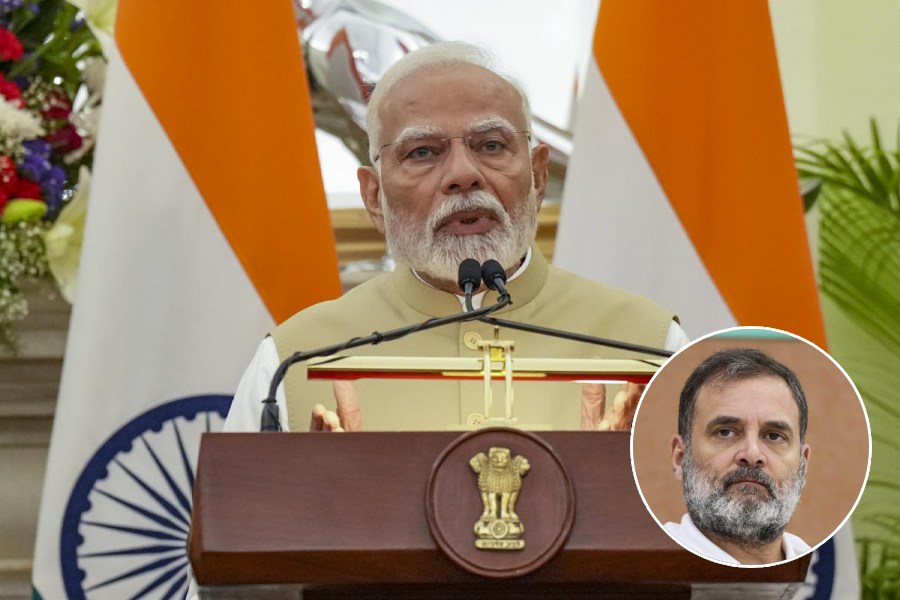 |
New Delhi, Nov. 4: The government plans to tweak taxes and come up with an incentive scheme to encourage electronic units to set up shop in the country.
As part of its “Make in India” campaign, the government is looking to quickly rejig the duty structure and bring before the cabinet a revised incentive scheme for investments in electronics hardware.
The tax tweaks aim to make the imports of mobile phones, laptops and other consumer electronics such as flat panel televisions prohibitively expensive so that companies are forced to at least assemble the products here.
Component duties, too, will be raised progressively to force the manufacturers to shift base.
Top finance ministry officials point out that the import of electronic items is second only to oil, accounting for a whopping $40 billion in 2013-14.
Trade analysts calculate that electronic imports would surpass oil by 2020, reaching an astounding $300 billion.
“Simply speaking we cannot afford this. India is one of the biggest markets for these goods and manufacturers need to understand that we cannot allow all our forex resources to be drained away to prop up manufacturing in Taiwan or China or Norway,” officials said.
Mobile handsets attract 0 per cent duty even though retail margins are as high as 15 per cent. LED TV sets have 10 per cent duty, while laptops attract a countervailing duty of 10 per cent.
Officials feel there is a scope of tweaking these duties without really increasing prices too much to force manufacturers to relocate.
The rates being worked out, which could be part of the next budget, will see finished products being taxed at higher rates than components.
However, the increases will have to be graded according to the duty commitments made to countries in bilateral trade pacts. Besides, the duties should reflect the proposed GST tax regime, said officials.
The incentive scheme for electronic units will provide for subsidy on capital investment to the extent of 20 per cent, besides reimbursing import duties and countervailing duties on capital imports for such hardware factories.
Sony, which has set a sales target of Rs 12,000 crore, or $2 billion, has no factories in India and imports mostly from Thailand, taking advantage of a trade pact.
The Japanese company is now believed to be scouting around for a possible production base to make flat panel television sets and smartphones, its two top selling products here.
Samsung, which has invested in India in a big way, has plans to invest in a mobile phone factory.
Under the “Make in India” programme, IT and telecom minister Ravi Shankar Prasad recently led an Indian team to Frankfurt to meet top German firms, including Siemens, and ABB.
However, officials said India was not trying to go back to the import substitution policy of the 1960s. “We need to not only attract electronics manufacturing but also see that it is competitive like automobile manufacture.”
India is looking at West Asia and Africa as potential immediate export markets for its electronics goods.
“India is not only looking at increasing its manufacturing share in GDP to 25 per cent, but also eyeing high value manufacturing to graduate out of low-tech, low value-added manufacturing,” said N.R. Bhanumurthy of the National Institute of Public Finance and Policy.
Besides electronics, bio-tech and defence manufacturing are the other focus areas.
India has also managed to attract two chip makers — ST, a France-Italy joint venture, and IBM — to set up two plants costing over $10 billion.
GMR is setting up an electronics manufacturing cluster at Hosur. Other similar electronics manufacturing parks are being planned in Bhopal, Hyderabad and Kochi.
Bankers say Rs 7,000 crore of investment is expected to flow into Hosur over the next five years.










